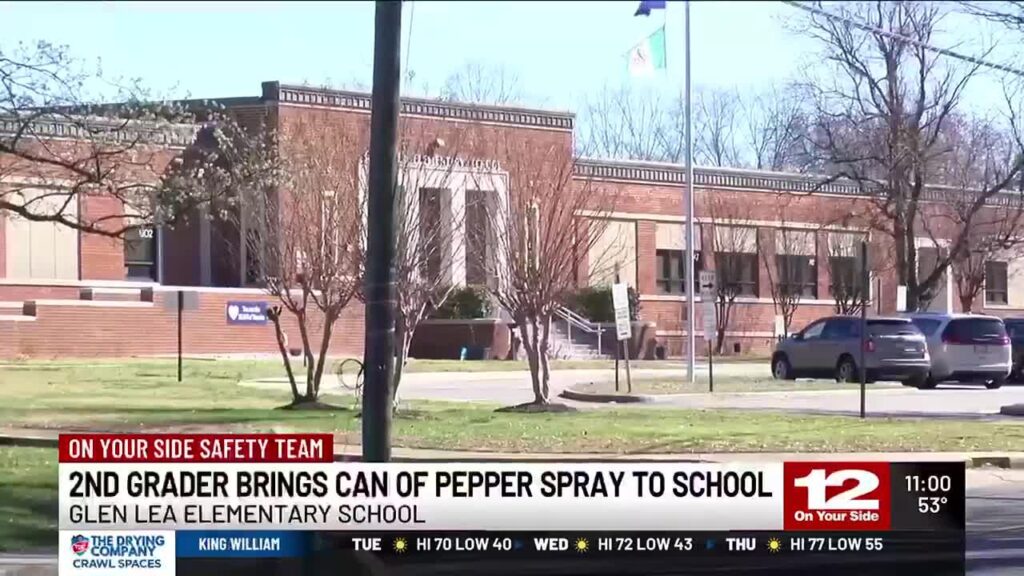Table of Contents
- Understanding Legal Restrictions on Pepper Spray Possession in Educational Settings
- Evaluating Safety Concerns and School Policy Implications
- Best Practices for Students and Parents Navigating Campus Security Rules
- Alternatives to Pepper Spray for Personal Protection on School Grounds
- To Conclude
Understanding Legal Restrictions on Pepper Spray Possession in Educational Settings
Possession of pepper spray in educational institutions is a complex issue influenced by a mix of federal, state, and local laws. Schools often implement stringent policies that either outright ban pepper spray or regulate its possession to ensure campus safety. These regulations are designed not only to prevent misuse but also to maintain a controlled environment where students, staff, and visitors feel secure. Before carrying pepper spray, individuals should verify the specific rules of their school district or campus, as these can vary significantly. Ignorance of these rules can lead to severe disciplinary actions, including expulsion or legal penalties.
Understanding the legal framework involves recognizing key factors such as:
- Age restrictions: Many states prohibit minors from purchasing or carrying pepper spray.
- Permitted uses: Some jurisdictions limit pepper spray use strictly for self-defense.
- Storage and transportation requirements: Schools often require that pepper spray be stored securely and only carried under certain conditions.
- Reporting and disclosure: Some educational settings mandate disclosing possession to campus security or administration.
Complying with these layered regulations helps to avoid conflicts with law enforcement and ensures that self-defense tools are used responsibly while respecting the educational environment.
Evaluating Safety Concerns and School Policy Implications
When assessing the implications of pepper spray restrictions on school campuses, safety must remain the paramount concern. While pepper spray can act as a deterrent against potential threats, its presence introduces risks of accidental exposure, misuse, or escalation of conflicts. Therefore, schools face a delicate balance between promoting a secure environment and avoiding unintended harm. Key factors influencing these policies include:
- Age appropriateness: Younger students may lack the maturity to responsibly handle or understand the consequences of carrying pepper spray.
- Training requirements: Without proper education, users are more prone to misuse, increasing liability risks for the institution.
- Legal restrictions: State and local laws vary widely and must be respected to avoid legal repercussions for schools.
From a policy perspective, many educational institutions are adopting comprehensive safety protocols that integrate controlled access to personal protection items alongside robust conflict resolution programs. This multi-faceted strategy encourages students to prioritize non-violent solutions while providing clear guidelines on when and how self-defense tools might be permissible. Schools considering policy revisions should:
- Engage stakeholders: Involve parents, teachers, and law enforcement in policy development to reflect community values and safety priorities.
- Establish clear communication: Ensure that students and staff understand the rules, consequences, and responsibilities associated with pepper spray usage.
- Regularly review policies: Adapt and update safety protocols based on emerging threats, technological advances, and feedback from real-world implementation.
Best Practices for Students and Parents Navigating Campus Security Rules
When it comes to adhering to campus policies around self-defense tools like pepper spray, open communication and education form the cornerstone of a safe environment. Students and parents should proactively review the institution’s security guidelines, often available on official websites or through student handbooks, to understand what is permitted. Engaging in dialogue with campus security officers or attending school safety workshops can clarify misconceptions about restrictions and foster a cooperative spirit. Maintaining transparency about intentions-not using pepper spray for intimidation but for safety-helps build trust among all parties involved.
Implementing practical strategies at home and on campus is equally important. Encourage students to carry alternative safety devices approved by school authorities, such as whistles or personal alarms, which provide effective deterrents without violating regulations. Parents can support by discussing situational awareness and conflict resolution techniques, emphasizing that pepper spray is a last resort rather than a first line of defense. Together, they can create a layered approach to personal safety that respects campus rules while empowering students to protect themselves responsibly.
Alternatives to Pepper Spray for Personal Protection on School Grounds
When traditional pepper spray is off-limits on school grounds, it’s essential to explore other effective and lawful options for personal protection. Many schools strictly prohibit pepper spray because of safety concerns and legal restrictions. Fortunately, there are several alternatives that prioritize both self-defense and compliance with campus rules. These options include personal alarms, which emit a loud, attention-grabbing sound designed to deter attackers and draw help quickly, and keychain self-defense tools such as kubotans or tactical rings. Such devices are discreet, easy to carry, and not typically banned on school property, empowering students and staff to feel more secure without violating policies.
Another viable choice involves adopting non-violent defense techniques like situational awareness and de-escalation skills, which can be just as effective as physical tools in preventing confrontations. For those who want to maintain physical readiness, lightweight personal safety training aids, such as small flashlights designed for self-defense or collapsible batons where legal, offer additional layers of protection. By combining these strategies, individuals can confidently navigate campus environments while respecting school regulations, ensuring safety without compromising legal boundaries.
To Conclude
Navigating the complex landscape of pepper spray restrictions on school campuses requires a careful balance between personal safety and legal compliance. By staying informed about your local laws, understanding school policies, and exploring alternative safety measures, you can ensure both protection and peace of mind. Remember, awareness and preparation are your best tools in fostering a safe educational environment for everyone involved. Stay informed, stay safe, and advocate for responsible security practices in your community.Check Our Other Blogs
- StunGun – Your Trusted Source for Stun Guns, Laws, and Self-Defense Tips
- PepperSprayLaws – Your Trusted Resource for Pepper Spray Information
- StunGunLaws – Your Trusted Guide to Stun Gun Legality and Safety




